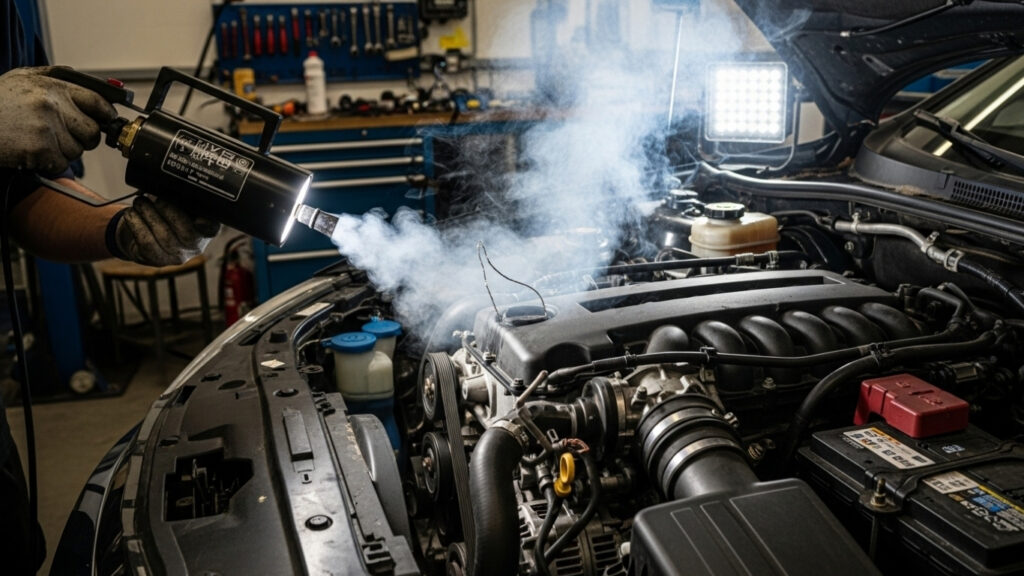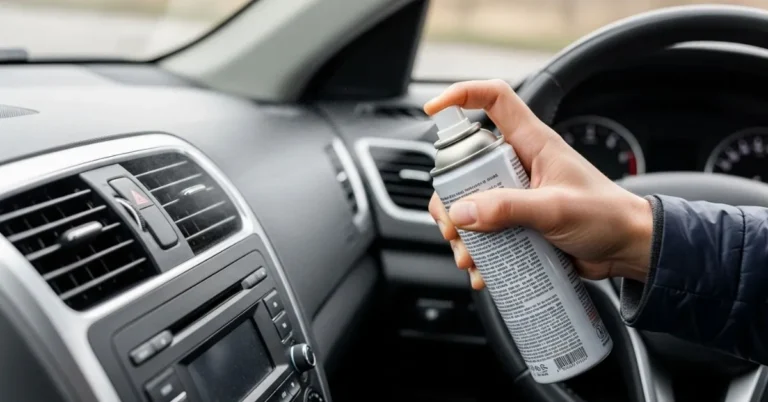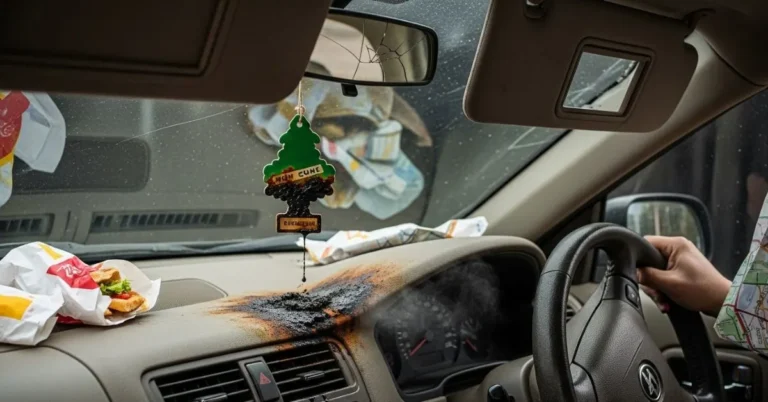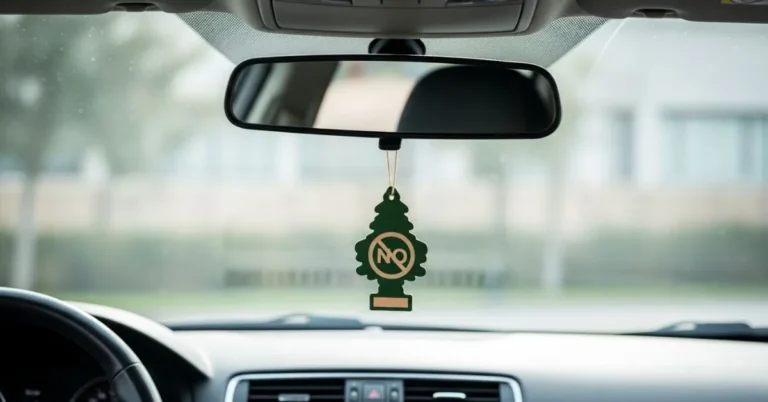
What does a vacuum leak sound like when cruising on a chill Sunday morning? Imagine this: coffee in the cupholder, windows slightly down, your favorite podcast rolling and suddenly, your engine starts hissing like it’s auditioning for a snake pit scene in a Hollywood thriller.
No warning lights. No dashboard alerts. Just hiss.
You turn off the radio. Still there.
You rev the engine. It hisses louder.
Cue the internal panic: Is my car about to explode?
Don’t worry probably not. But your car is trying to get your attention. That hissing could be a sign of a vacuum leak, and the sooner you figure it out, the less damage (and cost) you’ll face down the road.
In this guide, we’ll help you understand exactly what that sound means, how to detect it quickly, and how to fix it without draining your wallet or sacrificing your weekend to the local mechanic’s waiting room.
Let’s decode the hiss.
Contents
- 1 So, What Does a Vacuum Leak Sound Like?
- 1.1 Why That Sound Happens: A Peek Into Engine Vacuum
- 1.2 Other Tell-Tale Signs of a Vacuum Leak
- 1.3 What Causes a Vacuum Leak? (Common Culprits)
- 1.4 How to Detect a Vacuum Leak Fast (DIY Style)
- 1.5 Can You Drive With a Vacuum Leak?
- 1.6 How to Fix a Vacuum Leak (Without a Mechanic)
- 1.7 Sustainability & Savings Bonus
- 1.8 Quick Recap: What Does a Vacuum Leak Sound Like?
- 1.9 FAQs: Vacuum Leak Edition
- 1.10 Expert Thoughts: Hear the Hiss? Don’t Miss It.
- 1.11 About the Author
So, What Does a Vacuum Leak Sound Like?
If your engine has developed a vacuum leak, here’s what you’ll typically hear:
- A high-pitched hissing noise
- A whistling or sucking sound, especially noticeable near the engine
- Sometimes, a soft whoosh, almost like the air is escaping under pressure
This noise becomes more apparent when your car is idling or accelerating lightly. It’s often mistaken for a belt squeal or wind noise, but it doesn’t go away when you roll up your windows or turn off the A/C.
Why That Sound Happens: A Peek Into Engine Vacuum
Let’s break it down.
Your car’s engine uses vacuum pressure to control various functions from fuel delivery and ignition timing to cruise control and brake assistance. It maintains a tight, sealed environment where air is pulled in precisely and metered by sensors.
When a vacuum hose cracks or a gasket fails, the air gets sucked in unmeasured. That messes up your air-fuel ratio and roughly causes the engine to react. It also lets you hear the path of that rogue airflow, thus producing the signature hissing sound of a vacuum leak.
Think of it as trying to sip soda through a straw with a tiny hole in it annoying, inefficient, and noisy.
Other Tell-Tale Signs of a Vacuum Leak
Not every vacuum leak announces itself with a hiss right away. But if your car is whispering trouble, here are the signs to watch for:
- Rough or fluctuating idle
- RPMs bouncing up and down while parked
- Poor fuel economy
- Engine stalling at stop signs
- Sluggish acceleration
- Illuminated check engine light (P0171 or P0300 are common codes)
- Hard brake pedal (if the brake booster line is affected)
If you experience any combination of the above and hear that distinctive sound, odds are you’ve got a vacuum leak in the mix.
What Causes a Vacuum Leak? (Common Culprits)
Vacuum leaks can come from several sneaky spots under your hood. The most frequent offenders include:
1. Cracked or Aged Vacuum Hoses
These rubber hoses run to and from the intake manifold, PCV valve, brake booster, and more. Over time, heat and vibration make them brittle, causing cracks.
2. Faulty PCV Valve
This little guy controls airflow from the crankcase. It throws your whole vacuum system out of whack when it gets stuck or fails.
3. Leaky Intake Manifold Gasket
If the seal between your intake manifold and cylinder head fails, unmetered air sneaks in triggering a hiss and throwing off fuel trim.
4. Disconnected or Loose Fittings
Even something minor, such as a loose vacuum tee or unsealed air intake hose clamp, can create that infamous vacuum leak sound.
5. Aftermarket Modifications
Performance mods like turbo kits or cold air intakes often involve rerouting vacuum lines. One missed clamp or improper fit can cause an instant leak.
Read More: What Does a Vacuum Breaker Do? A Guide for Homeowners
How to Detect a Vacuum Leak Fast (DIY Style)
You don’t need a mechanic’s shop or expensive tools to find a vacuum leak. Here are some fast, effective ways to DIY the diagnosis:
1. Do a Thorough Visual Inspection
Look for:
- Cracked or collapsed hoses
- Loose fittings or hose ends
- Oily residue around the intake (a sign of gasket failure)
Tip: Don’t forget to check the brake booster vacuum line it’s thick, often hidden, and critical.
2. Listen Like a Pro
Amplifying your ears makes answering the question, “What does a vacuum leak sound like?” easier.
- Use a mechanic’s stethoscope (or a simple length of rubber tubing)
- Move it around the engine bay while the engine idles
- When you hear the hiss amplified bingo
3. Spray the Suspect Areas
Try this:
- Start the engine
- Lightly spray brake cleaner, carb cleaner, or even soapy water around vacuum hose connections and intake areas
- If the idle changes or bubbles appear there’s your leak
Safety first: Avoid hot engine parts and never spray near the alternator or open flame.
4. Use a Smoke Tester (Optional but Powerful)
A smoke machine pushes harmless smoke into the vacuum system. Wherever the smoke escapes that’s your leak.
- Budget smoke testers can be found online and are an excellent investment for DIYers.
Can You Drive With a Vacuum Leak?
Technically, yes. But should you?
Not recommended. Even a small leak can:
- Reduce engine performance
- Cause misfires
- Kill your fuel economy
- Damage your catalytic converter over time
The longer you wait, the more expensive the fix may become. So once you hear that vacuum leak sound act fast.
How to Fix a Vacuum Leak (Without a Mechanic)
The good news is that many vacuum leaks are fixable at home with basic tools and under $50. Here’s what you’ll need:
Tools:
- Flathead screwdriver
- Vacuum hose kit
- Hose clamps
- Carb cleaner
- OBD2 scanner (for checking/resetting codes)
Fixes:
- Replace cracked hoses with fresh rubber or silicone ones
- Tighten loose connections using new clamps
- Replace worn gaskets, especially at the intake manifold
- Swap a bad PCV valve most cost under $15
Tip: Doing this yourself saves money and is way more satisfying.
Sustainability & Savings Bonus
Spotting a vacuum leak early isn’t just suitable for your car it’s good for the planet. Here’s why:
- Prevents excess emissions caused by a lean fuel mix
- Keeps your catalytic converter from overworking (and ending up in a landfill)
- Saves fuel = fewer trips to the pump
Sustainability tip: Choose high-quality silicone vacuum hoses that last longer and reduce rubber waste when replaced.
Quick Recap: What Does a Vacuum Leak Sound Like?
Let’s wrap it all up with a clear answer:
What does a vacuum leak sound like?
It sounds like a persistent hiss, whistle, or sucking sound coming from the engine bay especially noticeable at idle or during acceleration. It is often accompanied by rough idle, poor MPG, and a check engine light.
Hear it. Find it. Fix it. Save your engine (and your sanity).
Read More: How to Bleed Brakes with a Vacuums Pump for Beginners
FAQs: Vacuum Leak Edition
1. What does a vacuum leak sound like at idle?
Typically, it’s a high-pitched hiss or whistling noise. It may be faint initially but gets more obvious when the engine is warm.
2. Can a vacuum leak damage your engine?
Yes. Over time, it can cause misfires, poor fuel trim, and catalytic converter damage.
3. Will a vacuum leak cause your car to stall?
Absolutely. Especially at idle, when precise air-fuel balance is critical. A leak can cause sudden stalling or engine surges.
4. How long does it take to fix a vacuum leak?
Many vacuum leaks can be fixed in under an hour with basic tools. Gasket replacements, depending on the part, may take longer.
5. Can I fix a vacuum leak myself?
Yes! Most vacuum leaks are DIY-friendly. Ensure you identify the source correctly and use the proper replacement hose or part.
Expert Thoughts: Hear the Hiss? Don’t Miss It.
Now that you know what does a vacuum leak sound like, you’re already one step ahead of the average driver.
Don’t ignore that subtle whistle or sudden hiss. With a keen ear, some know-how, and some budget-friendly tools, you can find that leak fast and fix it faster.
Because when your car talks, it’s always better to listen before it starts screaming.




